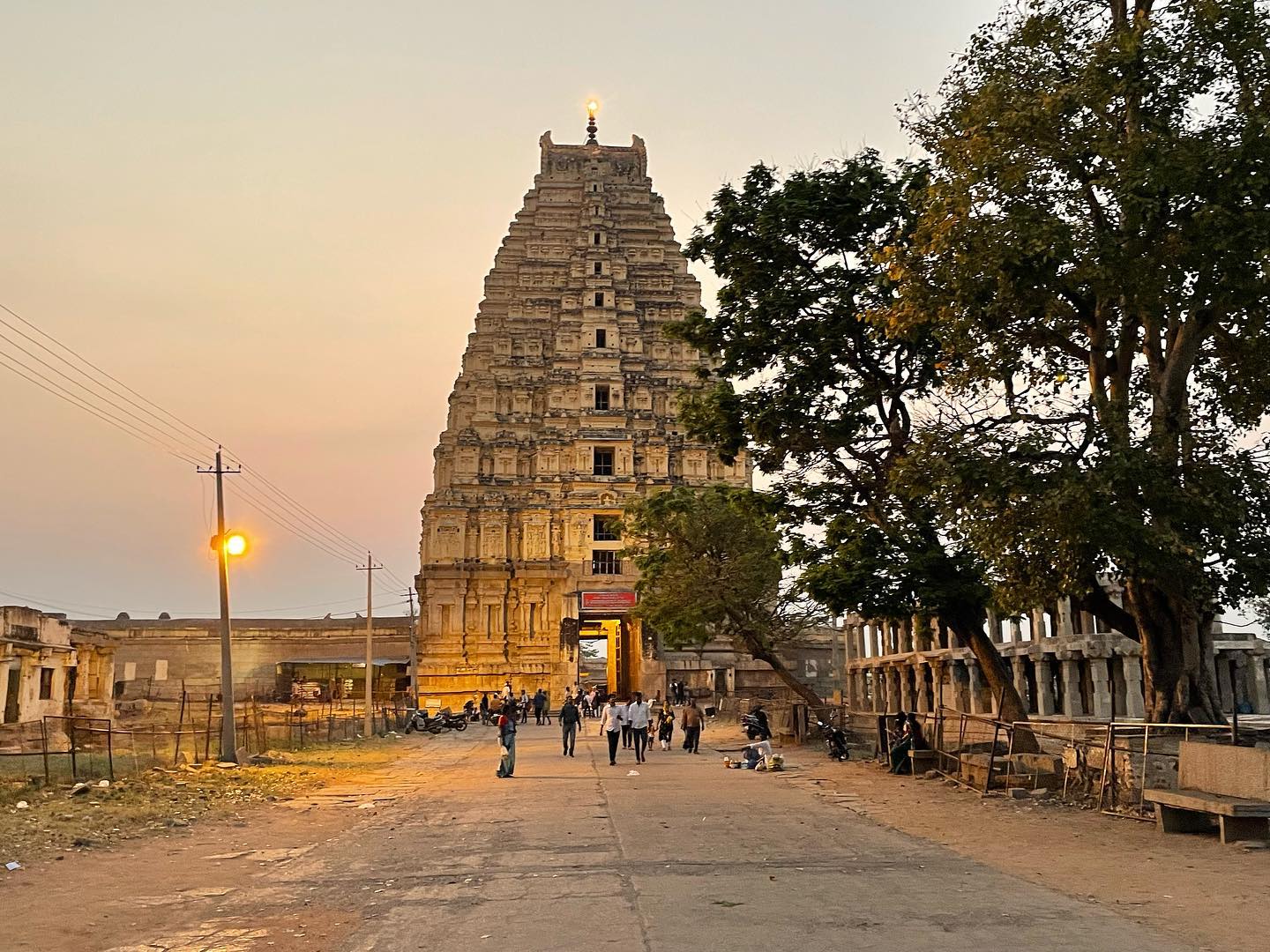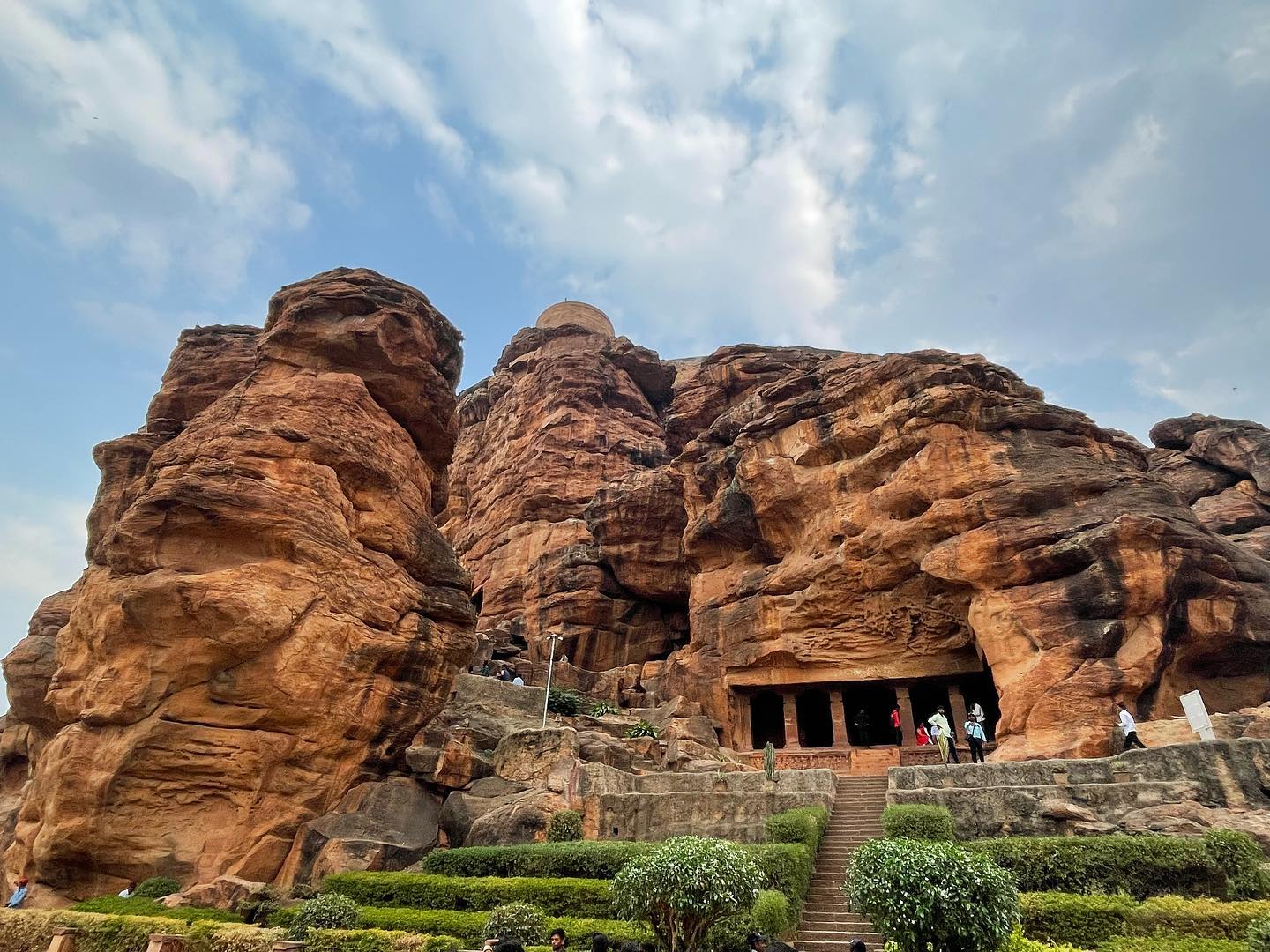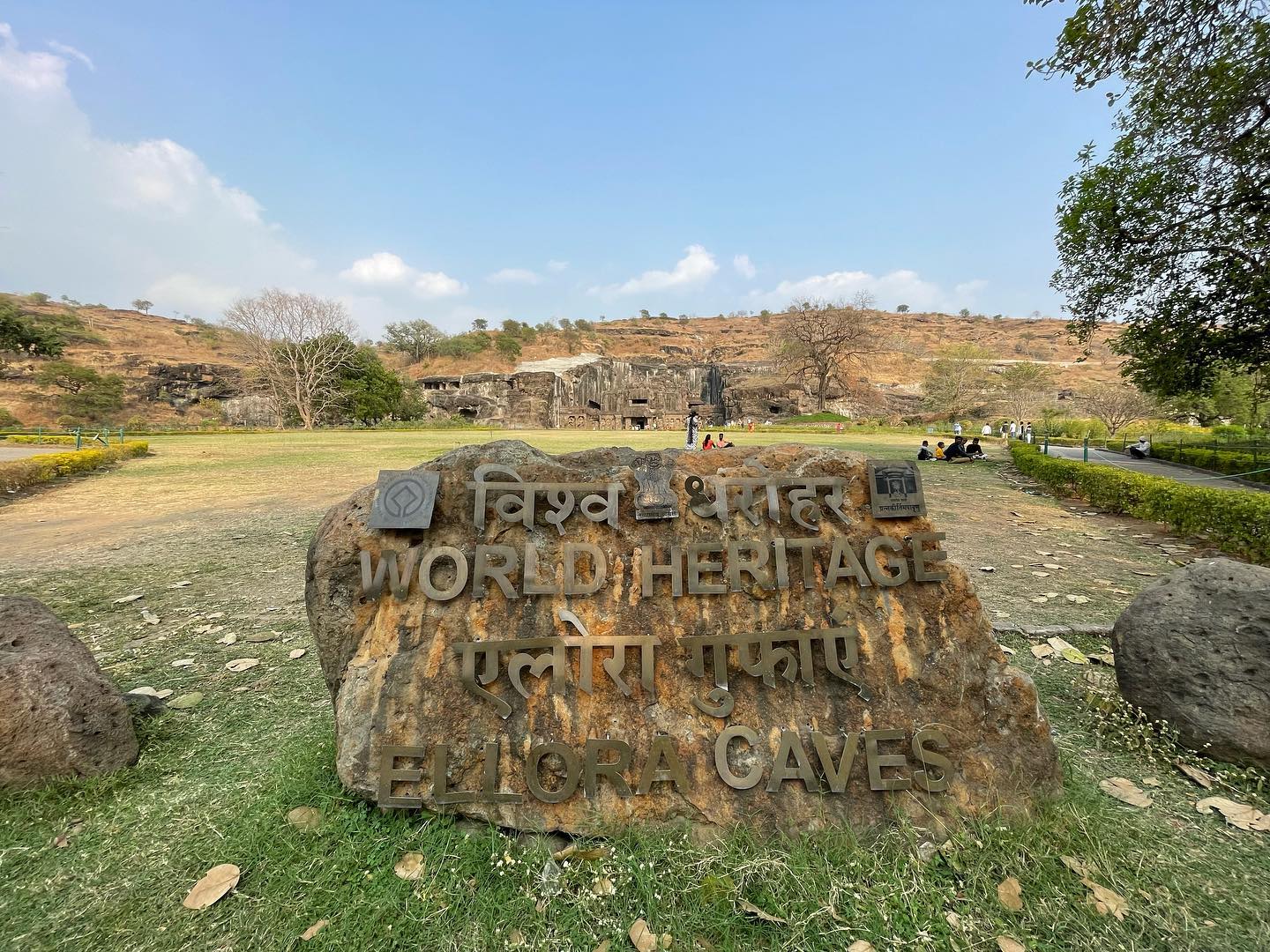14th October, 2021
Built between 950-1050 AD by the Chandela Dynasty, these temples represent various forms like meditation, spiritual teachings, relationship, through stimulating art.
The famous erotic sculptures of Khajuraho account for only 10% of the total sculptures.
The temple belongs to Hindu and Jain religion.
Of the original 85 temples, only 20 have survived destruction and devastation of time.
It was discovered in 1850s after being neglected for centuries.
It is said that in ancient times, King Chandravarman, planted Khajuraho trees all across. Hence the name Khajuraho.
Kandariya Mahadev temple is one of the highlights. It was built by Chandel King Vidyadhar.
The temple was not built using limestone. It was built by keeping stones one over the other.
The world famous Khajuraho Dance Festival happens there, and Indias best dancers perform there.
History
If the myth it is to be believed, Khajuraho was known as ‘Khajur-vahika’ or ‘Khajjurpura’ in the ancient times because of its golden date palms (known as ‘khajur’) that lined the gates of this city. It has been mentioned in the Mahoba-khand of Chandbardai’s (the famous medieval court poet) ‘PrithvirajRaso’ that Hemraj, the royal priest of Kashi (the old name for Varanasi), had an exceptionally beautiful daughter named Hemvati, who was unfortunately a child widow. One summer night, while she was bathing in a lotus-filled pond, the Moon God was so dazed by her beauty that he descended to earth in human form full of lust and passion and ravished her. Later, he repented when the distressed Hemvati threatened to curse him for ruining her honor and dignity and blessed her with a valiant son who would later become a king and build the temples of Khajuraho. Hemvati left her home and gave birth to a brave and strong boy child in the tiny village of Khajjurpura. The child was named Chandravarman and it is said that by the time he was 16 years old, the glorious boy was strong and skilled enough to kill tigers or lions with his bare hands. With the blessings of the Moon God, his father he became a mighty king and built the fortress at Kalinjar. Then heeding to his mother’s wishes he built 85 legendary temples surrounded by lakes and gardens at Khajuraho and also performed the bhandyayagya, to wash away the sins of his mother.
Khajuraho is an ancient city known for magnificent temples and its intricate sculptures located in the Chhatarpur district of Madhya Pradesh. Built in the medieval century by the Chandela Dynasty, the UNESCO site of ‘Khajuraho Group of Monuments’ is famous for its Nagara-Style architecture and graceful sculptures of nayikas and deities. The splendour of the intricate statues is one of the reasons that makes it a popular site to visit among tourists.
Built between 950-1050 AD by the Chandela Dynasty, these temples represent various forms like meditation, spiritual teachings, relationship, through stimulating art. The temples are famous for its craftsmanship that consist of splendid demonstrations of fine sculptures and exceptional architectural skill, making them one of the most stunning UNESCO World Heritage Sites in India. These temples are divided into three groups: Eastern, Western and Southern. Beautiful, detailed and expressive, the sculptures of the Khajuraho temples will leave you in awe and wonder.
According to local legends, there is an interesting story of how and why the temples are called ‘Khajuraho’.
The Chandela rulers, who began constructing the temples, got the entire area enclosed by a wall. The wall had about eight gates which were primarily used for entry or exit. It is said that each gate was flanked on either side by date and palm trees. The name was derived from these very trees and the temples were called “Khajura-vahika”. In the Hindi language, ‘Khajura’ means ‘Date Palm’ and ‘Vahika’ means ‘Bearing’. The Date Palm tree is found in abundance in this region.
The famous erotic sculptures of Khajuraho account for only 10% of the total sculptures.
The temple belongs to Hindu and Jain religion.
Of the original 85 temples, only 20 have survived destruction and devastation of time.
It was discovered in 1850s after being neglected for centuries.
It is said that in ancient times, King Chandravarman, planted Khajuraho trees all across. Hence the name Khajuraho.
1986 – UNESCO.

As per the legends, Hemvati was a beautiful woman, after whom the Khajuraho temples were built. One day, when she was bathing in a pool in Benaras, the Moon God was swooned by her beauty, and could not wait any longer to see her. They conceived a child and named him Chandravarman. However, she feared that her child might have to face harassment as he was born out of wedlock. She was so distressed that she cursed the Moon God, who later prophesied that the child will grow up to become a great king.
Just like the prophecy, the child indeed grew to become a great king, who founded the Chandela dynasty. One day, after Hemvati passed away, her son saw her in his dreams, where she asked him to construct temples that would depict human passions.
The Khajuraho group of temples were built during the rule of Rajput Chandela dynasty. They started building the complex as soon as they rose in power throughout their kingdom, which later came to be known as Bundelkhand. Most temples were constructed between 950 and 1050 AD during the reigns of Hindu Kings Yasovarman and Dhanga.
Khajuraho had 85 temples until the 12th century. When during the 13th century, central India was seized by the Delhi Sultanate, some of the temples were destroyed and the rest left in neglect. Now, only 22 temples managed to survive and stood the test of time.
The group of temples of Khajuraho testifies to the culmination of northern Indian temple art and architecture of the Chandella dynasty who ruled the region in the 10th and 11th centuries CE. Distributed over an area of 6 square km in a picturesque landscape, the 23 temples (including one partly excavated structure) that form the western, eastern, and southern clusters of the Khajuraho Group of Monuments are rare surviving examples that display the originality and high quality of Nagara-style temple architecture.
The Khajuraho Group of Monuments demonstrates in layout and physical form, the pinnacle of temple architectural development in northern India. Built in sandstone, each temple is elevated from its environs by a highly ornate terraced platform, or jagati, on which stands the body, or jangha, whose sanctum is topped by a tower, or shikhara, of a type unique to Nagara, where the verticality of the principal spire atop the sanctum is accentuated by a series of miniature spires flanking it, each symbolizing Mount Kailasa, the abode of the Gods.
The plan of the temples shows the spatial hierarchy of axially aligned interconnected spaces. The temples are entered through an ornate entrance porch (ardhamandapa), which leads to the main hall (mandapa), through which one accesses the vestibule (antarala) before reaching the sanctum (garbhagriha). The main halls of the temples were often accompanied by lateral transepts with projecting windows as well as a circumambulatory path around the sanctum. Larger temples had an additional pair of transepts and were accompanied by subsidiary shrines on the four corners of its jagati.
The temples of Khajuraho are known for the harmonious integration of sculptures with their architecture. All surfaces are profusely carved with anthropomorphic and non-anthropomorphic motifs depicting sacred and secular themes. Sculptures depicting acts of worship, clan and minor deities, and couples in union, all reflect the sacred belief system. Other themes mirror social life through depictions of domestic scenes, teachers and disciples, dancers and musicians, and amorous couples. The composition and finesse achieved by the master craftsmen give the stone surfaces of the Khajuraho temples a rare vibrancy and sensitivity to the warmth of human emotions.
Criterion (i): The complex of Khajuraho represents a unique artistic creation, as much for its highly original architecture as for the high-quality sculpted décor made up of a mythological repertory of numerous scenes of amusements that includes scenes susceptible to various interpretations, sacred or profane.
Criterion (ii): The temples of Khajuraho bear an exceptional testimony to the Chandella culture, which flourished in central India before the establishment of the Delhi Sultanate at the beginning of the 13th century CE.
Integrity
Khajuraho Group of Monuments includes all the elements necessary to express its Outstanding Universal Value, including 23 temples that together demonstrate the originality and high quality attained in northern Indian Nagara-style temple architecture. The property is of adequate size to ensure the complete representation of the features and processes that convey the property’s significance, and does not suffer from adverse effects of development and/or neglect.
To safeguard the temples within their landscape setting, the western, eastern, and southern clusters are each fenced, thus delineating the protected limits. This curbs the spill-over of settlements that once comprised a part of the Chandella Empire. Identified potential threats to the integrity of the property include the nearby Khajuraho Airport, in the form of possible vibrations, increased volume of dust particles, etc.
Authenticity
The property is fully authentic in terms of its location and setting, forms and designs, and materials and substance. Its historic location has not changed. The forms, designs, and materials authentically illustrate the elements of the mature form of northern Indian temple architecture, including a combination of saptaratha plan topped by a form of shikhara unique to the Nagara style. Set in a picturesque landscape, these temples show the celebration of Chandella culture and power.
Protection and management requirements
Khajuraho Group of Monuments is owned by the Government of India and managed by the Archaeological Survey of India through the Ancient Monuments and Archaeological Sites and Remains (AMASR) Act (1958) and its Rules (1959), amendment (1992), and Amendment and Validation Act (2010). The AMASR Acts also delineate prohibited and regulated areas extending 100 m and 200 m respectively from the designated monument. The land abutting the monuments is managed jointly by the Revenue official (i.e., District Collector, State government of Madhya Pradesh) and the Archaeological Survey of India, with the latter responsible for final approvals. In addition to the aforementioned protective designations, the rural landscape is managed by the Nagar panchayat (town-level governance) through the Madhya Pradesh Bhumi Vikas Rules (1984), which can regulate and protect heritage sites. Clause 17 of Section 49 of the Madhya Pradesh Panchayati Rajya Adhiniyam Act (1993) includes a provision for the preservation and maintenance of monuments. The Archaeological Survey of India reviews and strategizes the allocation of resources in consonance with the identified needs. Issues such as interventions, training, research, and outreach are determined annually on the basis of site inspections and assessments. These actions form an integral part of the operational management mechanism, augmented with experts as needed.
Sustaining the Outstanding Universal Value of the property over time will require continuing to protect and control the area immediately surrounding the property and monitoring the situation at the nearby airport to identify and eliminate any negative impacts on the value, integrity or authenticity of the property.
India is known to have more than 2 million Hindu temples. These temples reflect the variety of Indian culture and way of life. Temple architecture in India has always embodied an underlying vision. It is a representation of experience, space and time.
The art and architecture involved in the construction of Hindu Temples is well defined in the Shilpa Shastra. It mentions three main kinds of temple architecture in India: Nagara or the Northern Style, Dravida or the Southern style and Vesara or the Mixed style.
The defining features of a Nagara style are Garbhagriha (Sanctum Sanctorum), Shikhara (Curvilinear tower), and Mandapa (Entrance Hall). The Nagara style developed gradually as the earlier temples had only one Shikhara, while the later temples were constructed with multiple Shikharas and the Garbhagriha can always be found under the tallest tower.
The Temples of Khajuraho are a magnificent example of the Nagara style of temples as the temples consist of a sanctum, a narrow ante-chamber (antarala), a transept (mahamandapa), additional halls (ardha mandapa), a mandapa or nave and an ambulatory passage (Pradakshina-path) which is lighted by large windows.
Khajuraho, known for its ornate temples, was built by the Chandela rulers between 900 CE to 1130 CE. The first mention of Khajuraho and its temples is in the accounts of Abu Rahyan al Biruni ( 1022 CE) and Ibn Batuta (1335 CE). The temples were said to have been spread across 20 square kilometres and there were around 85 temples in the 12th century. The ravages of time have reduced the number of temples in Khajuraho to just 20 today.
The Chandela Empire ruled central India from the tenth to the fourteenth centuries. Chandelas were well known for their interest in art and architecture. Although followers of Shaivism, the Chandelas were also said to have been inclined towards Vaishnavism and Jainism as well.
The carvings at the temples seem to be predominantly about Hindu deities and mythology. The architectural style also follows Hindu traditions. This can be validated by various factors. A predominant feature of the construction of a Hindu temple is that the face of the temple should be towards the direction of sunrise. All the temples of Khajuraho have been built with this in mind. Moreover, the carvings reflect the four goals of life in Hinduism, viz, dharma, kama, artha, moksha.
The monuments built by the Chandelas were famous for their architectural and sculptural glory. The Chandelas were also deeply interested in performance arts and the various forms of music and dance. This is evident from the sculptural representation of various scenes of music and dance depicted on the walls of these temples.
Erotic imagery is very common in the Temples of Khajuraho. Sculptures of celestial nymphs with broad hips, heavy breasts and languishing eyes are commonly found in the Kandariya Mahadeva and Vishwanath Temple. These sculptures are believed to reflect the idea of female beauty and fertility. Other scenes depicted on the walls of the temples are a part of the Narathara (the human life cycle) signifying how sexual procreation and kama are an essential aspect of human life.
The major focus of the study of the Temples of Khajuraho have been on the sculptures. The walls of these temples have some of the best sculptures of the time, making Khajuraho a representation of excellent artistic features. It is believed that the temples constitute five different sets of sculptures:
- cult images
- the parivara, parsva and avarana devatas
- the apsaras and the surasundaris
- secular sculptures of miscellaneous themes (dancers, musicians, disciples and domestic scenes)
- mythical creatures (vyalas, sardula and other animals)
These sets of sculptures and erotic images represent scenes from day to day life.
Quite a few stories revolve around the history of these temples. One theory posits their construction can be understood as a part of the proliferation of the Siva-Sakti cult. The other theory is that the temples are a representation of the devadasis who were once a major part of the temple activities. The most beautiful women were brought from Magadha, Malwa and Rajputana to be trained as devadasis in the Temples of Khajuraho. People say that the Surasundaris, who cover the interior and the exterior walls of the temples, were taken from real life and juxtaposed with the sculptures of Gods and Goddesses. Another theory says that the sculptures represent the life-cycle of a normal human being. It is difficult to state with certainty which of these theories is correct, as no written texts describing the construction exist today. Regardless of the reason behind the sculptures, what we do know is that we have been gifted with a set of the most ornate, intricate and beautiful sculptures extant anywhere in the world.
The Temples of Khajuraho are divided into three groups, the Western Group, the Eastern Group and the Southern Group.
The architecture of the Temples of Khajuraho is very complex. The main components of these temples are:
- The Garbhagriha (sanctum sanctorum) with antarala, a narrow ante-chamber.
- The Maha Mandapa, a large hall.
- The Ardha Mandapa and a mandapa, which are smaller additional halls.
- The Pradakshina Path, a circumambulation path.
A few temples at Khajuraho are of the Panchayatana type, with four shrines dedicated to the divinities and often another shrine in front of the portico dedicated to the vahana (vehicle) of the principal deity.
The Temples of Khajuraho are believed to have been built of light-coloured sandstone imported from the quarries of Panna, from the east bank of the Kane River. Iron clamps are also freely employed in the construction of the temples. A few other smaller temples are built partly of sandstone and partly of granite.
Western Group of Temples –
The Western Group of Temples are situated on the west of the Bamitha-Rajnagar road on the banks of Sib-Sagar.
They comprise six major edifices and are dedicated to the Shaivite and Vaishnavite cults.
ChausathJogini Temple
The temple premises consists of 64 small cells corresponding to the number of Yoginis, the female attendants of Goddess Kali, after whom the temple is named. No images remain on any of the 64 cells. This temple stands on the low rocky eminence to the south west of the Sib-Sagar Lake. This is the only temple in Khajuraho which is built entirely of granite and is oriented north-east and south-west. The temple stands upon a massive plinth and comprises a courtyard which is 104 feet in length and 60 feet in breadth. It is surrounded by 65 cells, of which only 35 have survived. The cells are roofed with small spires or sikharas, the lower part of which are adorned with triangular ornaments in imitation of the chaitya windows. There is no dated inscription to show the precise age of the temple.
Kandariya Mahadeva Temple
Largest of all the temples in Khajuraho, it dates back to the 10th century CE. It is 109 feet high and 60 feet wide . The interior arrangement of the temple differs from the usual construction of a Hindu temple as it has an open passage around the sanctum, thus forming a high altar at the inner portion of the temple. The walls of the Kandariya temple carry nearly nine hundred images. The height of the figures varies from 2.5 feet to 3 feet. The entrance of the temple is in the shape of an arch and is decorated with figures of deities and musicians. Also, the entrance of the sanctum has elaborate floral carvings interspersed with figures of ascetics engaged in penance. The female figures at the base of the jambs are identified to be Goddess Ganga (River Ganga) and Goddess Jumna (River Yamuna). The Goddesses are accompanied by their respective vehicles, the crocodile and the tortoise. Inside the sanctum stands a marble linga, the symbol of Lord Shiva. There are also numerous figures of apsaras or nymphs in all sorts of delicate postures.
Devi Jagdamba Temple
Around 77 feet in length and 50 feet in breadth, this temple is now known by the name of Devi Jagdamba or the ‘Mother Goddess of the World’. It was originally believed to have been dedicated to Lord Vishnu as his figure occupies the centre of the entrance to the sanctum. It also has the figures of Lord Shiva and Lord Brahma to the right and left. Inside the sanctum, there is an elaborate statue of a four-armed female figure holding lotus flowers. Another figure of Goddess Laxmi (consort of Lord Vishnu), is also present in the temple. Based on some inscriptions found here it is assumed that the temple was built in the tenth or eleventh century, the period in which the Chandela rule flourished. A figure of Yama lies on the south side of the sanctum while a figure ofLord Shiva (eight handed and three headed) is present on the lower niche.
Chitragupta or Bharatji’s Temple
This temple faces east and is 75 feet in length and 52 feet in breadth. Dedicated to the Sun God (Surya), an image of the Sun God is enshrined within the sanctum, wearing high boots and driving a chariot of seven horses. The length of the image is 5 feet while another image of the Sun God can be found over the entrance. Another sculpture of interest is an eleven-headed image of Lord Vishnu enshrined in the central niche to the south of the sanctum. The central head is of Vishnu himself, while the remaining ten heads are symbolic of his ten incarnations. There are no inscriptions on the temple therefore the period of its construction cannot be defined.
Vishwanath Temple
Vishwanath, or the ‘Lord of the Universe’, is another name for Lord Shiva to whom this temple is dedicated. As tall as 90 feet, the entrance of the sanctum sanctorum has a figure of Lord Shiva seated on Nandi (bull). There are also figures of Lord Brahma on his vehicle, (the Goose) and Lord Vishnu on his vehicle (the Eagle) to the right and left. Inside the shrine is a lingam and inside the mandapa are two Sanskrit inscriptions engraved on stone slabs. The larger inscription to the left is dated Vikrama Samvat of 1059 or 1002 CE. It gives an account of the genealogy of the Chandela kings from King Nannuka to King Dhanga. According to the inscription, the temple was built under the supervision of King Dhanga who dedicated it to Lord Shivaby installing a Linga with an emerald placed inside it.
The past of Khajuraho is shrouded with mystery and conjecture. In the midst of the wilderness full of ferocious animals, there is the small town of Khajuraho standing alone in its solitude with its ancient temples. With hardly any written records and rare references to its origin, the history of Khajuraho has become trapped in the mythical folklore of the region. The beautiful artwork of these temples have gained the attention of the art lovers all over the world but the real purpose behind their construction is a mere guess work of the intellectuals. The These temples fire the imagination of the visitors with innumerable questions such as their significance and their position in the society, the reason behind using these temples as an art gallery, the whereabouts of the said kingdom and why only the temples have been found and there are no ruins of the mansions and palaces in the nearby area. The graphic representation of sexual and erotic postures in a religious place is bewildering too.
However, if the myth it is to be believed, Khajuraho was known as ‘Khajur-vahika’ or ‘Khajjurpura’ in the ancient times because of its golden date palms (known as ‘khajur’) that lined the gates of this city. It has been mentioned in the Mahoba-khand of Chandbardai’s (the famous medieval court poet) ‘PrithvirajRaso’ that Hemraj, the royal priest of Kashi (the old name for Varanasi), had an exceptionally beautiful daughter named Hemvati, who was unfortunately a child widow. One summer night, while she was bathing in a lotus-filled pond, the Moon God was so dazed by her beauty that he descended to earth in human form full of lust and passion and ravished her. Later, he repented when the distressed Hemvati threatened to curse him for ruining her honor and dignity and blessed her with a valiant son who would later become a king and build the temples of Khajuraho. Hemvati left her home and gave birth to a brave and strong boy child in the tiny village of Khajjurpura. The child was named Chandravarman and it is said that by the time he was 16 years old, the glorious boy was strong and skilled enough to kill tigers or lions with his bare hands. With the blessings of the Moon God, his father he became a mighty king and built the fortress at Kalinjar. Then heeding to his mother’s wishes he built 85 legendary temples surrounded by lakes and gardens at Khajuraho and also performed the bhandyayagya, to wash away the sins of his mother.
Yet another version of the above legend raises Hemvati as a dutiful daughter who sacrificed all her happiness and dignity for her father. Mani Ram, the royal priest of Kalinjar, miscalculated once and declared the dark night as the full moon night or Purnamasi in front of the king. Hemvati, his widowed daughter could not bear the possibility of any stigma on her father’s reputation and prayed to the Moon God to uphold the word of the priest. However, she had to pay a heavy price for her wish being granted when the Moon God who was smitten by the lady’s beauty ravished her in return for his favor. When Mani Ram came to know of this entire incident, he was so ashamed and grief-stricken that he cursed himself and turned into a stone. However, Hemvati got pregnant with the tryst and gave birth to a virtuous son by the name of sage Chandrateya who is believed to be the founder of the Chandela dynasty. Chandelas worshipped the Mani Ram-turned-stone as Maniya Dev.
Kandariya Mahadev was built by Chandel King Vidyadhar.
The temple was not built using limestone. It was built by keeping stones one over the other.






















